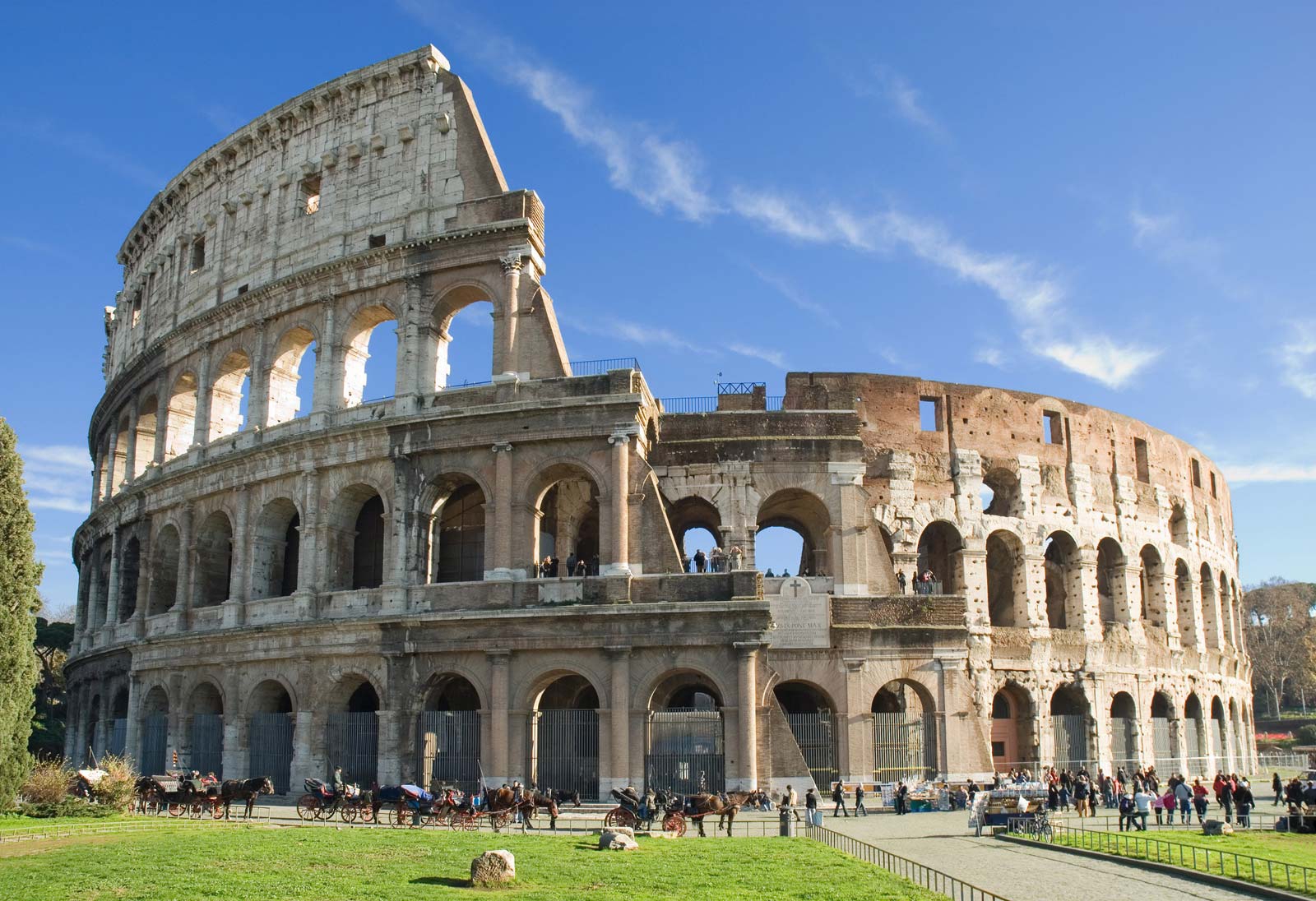
Even the mightiest surrender their swords at the feet of time, as has the once splendid structure, the Colosseum. Yet, a part of it stands as not only the biggest but the most famous monument and architecture structure in Rome. Every year it is visited by over six million people, waiting to explore the 2000 years’ worth history of the magnificent landmark.
Though two-thirds of the original structure has been destroyed over the years, the icon of Rome awaits to take its visitors back in time and witness the Roman Empire and their way of life.
Let us head on a trip to Colosseum and explore its rich history, grand structure, location, the story of the most ostentatious opening ceremony, and why it is one of the most sort after tourist locations.
TRACING THE ANCIENT FOOTSTEPS
Also known as the Flavius amphitheatre, the construction of the grand structure began in the year 72, under the Flavian Emperor, Vespasian.
When his predecessor Emperor Nero, took the centre of the city to build his enormous palace – The Golden Palace after a great fire in year 64 left destruction in its wake, the people lost their lush land.
As a part of Flavian politics, Vespasian decreed to build a new amphitheatre in place of The Golden Palace to return the land to the people and open space for their entertainment. But the architectural structure was more than that. It was a way to consolidate the Flavian dynasty, as it did.
Vespasian’s rule was of short 10 years. After his death, his elder son, Titus took over the responsibility to see through the completion of the construction of the amphitheatre. The construction was finished in the year 80. The Flavian dynasty gained the goodwill of people for their popularist gesture of returning the centre of the city to its people.
Under the motto “Bread and Circus”, the Colosseum ensured the philosophy followed by Vespasian. While Rome was still fuelled by civil wars, Vespasian with his shrewdness gave his people food and entertainment to distract them from an uprising.
THE GRAND STRUCTURE
Measuring 156 meters in width, 188 meters in length, and 57 meters in height, with four stories that could hold more than 50,000 spectators at once. Of course, the seating was arranged according to the social ranking of the time. Colosseum was constructed in a short span of a decade – a remarkable feat for such a grand structure. The ellipsoid arena protected the spectators from the sun with a retractable velarium. It took a hundred sailors from the Imperial fleet to move it in perfect sync at the beats of the drums. Regardless of where they sat, the people would get the perfect view of the stage.
Around three stories of 80 arched entries decorated the Colosseum. The main pillars and walls were built to be strong with the use of Travertine, a limestone bought from Tibur. Tuff, though not fire-resistant, was used in the construction to provide elasticity. Bricks, Mortar, Lime, along with Marble for decoration and Iron and Bronze clamps to bind the stones together. And of course, the Roman invention of Concrete could not be missed to list in the materials used for construction.
Each story of the arched entrance contained a different style of columns, starting from the top, it had ornate Corinthian style, in the middle Ionic style, and the bottom, the simple Doric style.
The sanded arena floor was just as impressive as the rest of the structure. It was often decorated with rocks and trees to demonstrate exotic locations. Underneath was a labyrinthian of compartment rooms, animal pens, and corridors that are visible to the modern visitors. With the use of indigenous underground machinery, they would often introduce an exotic animal into the proceedings.
LOCATION
Sitting on the east bank of the River Tiber, the river that crosses the city of Rome, the Colosseum is considered to be one of the greatest shows of Roman architecture prowess. It is on the east of the ancient Roman Forum, the location of main buildings of power and a large square where the population met. The Capitol was a little more than 1.6 kilometres to the west of the structure.
After the fall of the Western Roman Empire, the structure fell into massive disrepair. For centuries, it suffered lootings, earthquakes, and even bombing during World War II. After some four active centuries of use, the Colosseum was abandoned after the Romans’ change of taste towards Gladiatorial combats put it out of use. Rather its purpose became that of a quarry for new building projects, the likes of cathedrals of St. Peter and St. John Lateran, the Palazzo Venezia to name a few.
At the end of thousands of years of neglect, by the 20th century, all of its marble seating and much of its decorative elements were lost. And only in 1990 did the restoration projects began, but by then, the Colosseum had lost its former glory. Yet it stands as one of the most popular tourist attractions in Italy.
THE OSTENTAIOUS OPENING CEREMONY
In the year 80, Titus officially declared the Colosseum open for public use after its completion. But it was far from a modest ceremony. Rather, Titus announced 100 days of games to celebrate its opening.
The 100 days of non-stop games included gladiatorial combats, executions, music, and exotic wild animal fights. The day would begin with citizens of Rome flocking to the Colosseum early in the morning and taking their assigned seats as they waited for the processions to begin. At the sound of trumpets, the procession would begin with elaborate wild animal hunts, getting the audience energized as their cheers were heard throughout the arena.
During the mid-day interval, what is known as Ludi Meridian took place. Condemned criminals were thrown in the arena to survive against a wild beast, or re-enact ancient myths and burlesque comedies to provide relief from the rhythm of butchery.
It was only in the afternoon that the stars of the day took the centre stage – the Gladiators. The brutal but often choreographed armed combats pitted combatants against one another. It was them that the masses had gathered to see. And they enjoyed surprising public acclaim and high prize money, although they were way down the social ladder. Gladiators were often slaves or heinous criminals who had exchanged their death sentences for life at the arena, or prisoners of wars. Some, however, were also willing participants seeking to earn glory and fame.
During Titus’s opening ceremony alone, nine thousand animals were slain in the arena. A body count of more than two thousand gladiators is also added to the grand inaugural ceremony!
WHY DOES COLOSSEUM STAND OUT?
How does one go on to build a massive structure like the Colosseum in less than ten years? It is owed to the architectural skills of the Romans that despite the end of Colosseum’s heyday, it stands out centuries later.
The Romans were excellent at using arches in their structures as the main element of construction. It is the arches that allow heavyweight to be distributed evenly and Romans used the knowledge to their full capacity.
Like the rest of their Republic and later their Empire, Romans constructed aqueducts and placed them one on top of the other in the case of the Colosseum.
What makes the landmark even more impressive is that, unlike the earlier amphitheatres, Colosseum did not require the support of the hillside. It was not dug next to a hill on which it could relay. Rather, Colosseum stands on its own built by using a complex system of barrel and groin vaults.
Even after centuries of mishandling of the glorious architecture, Colosseum stands testament to great survival and a beautiful exhibition of the culture of Ancient Rome.
By Disha Walia


